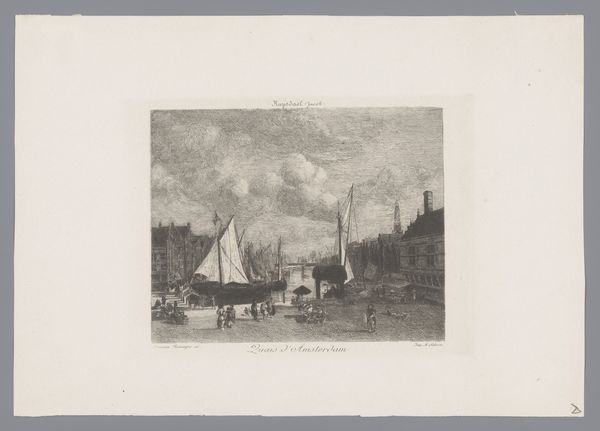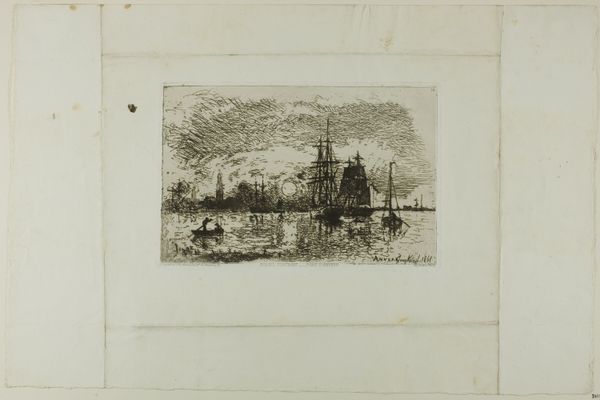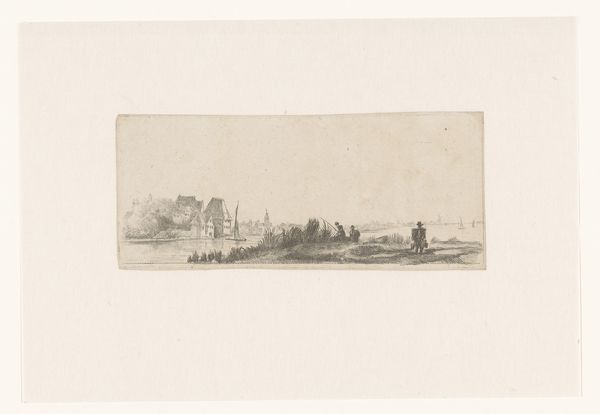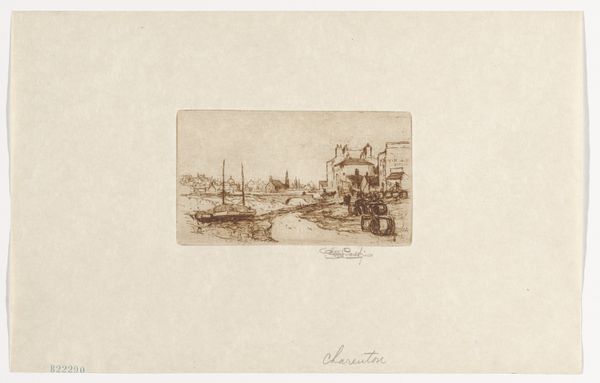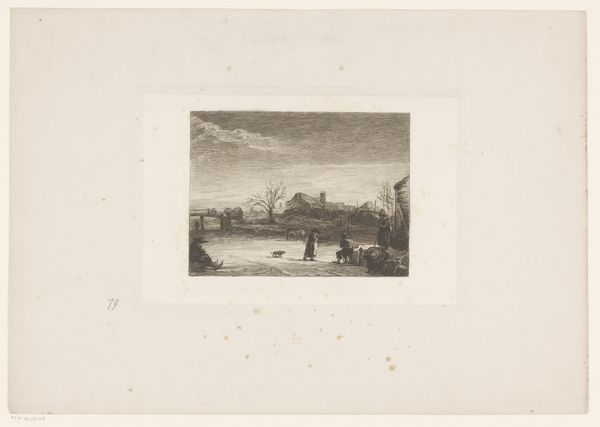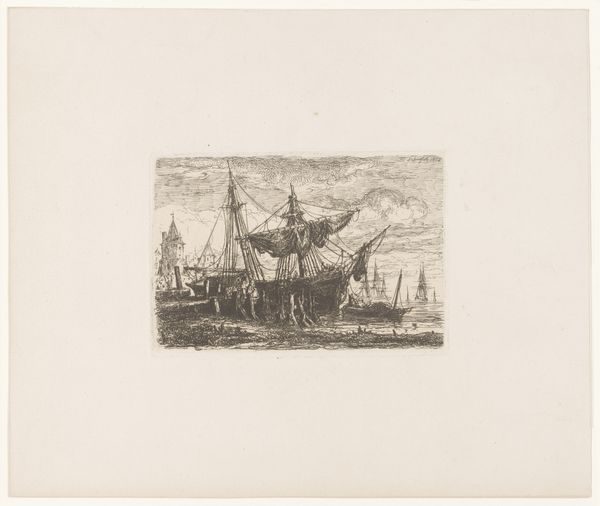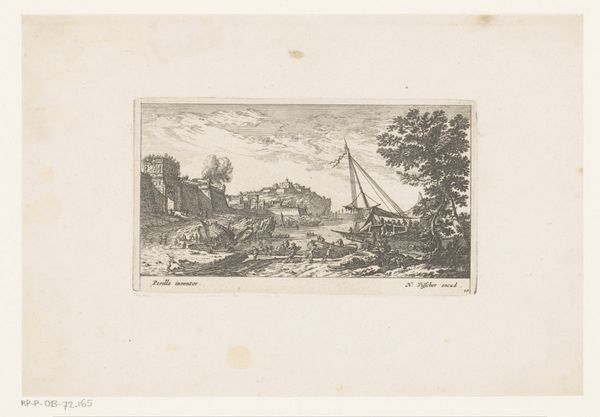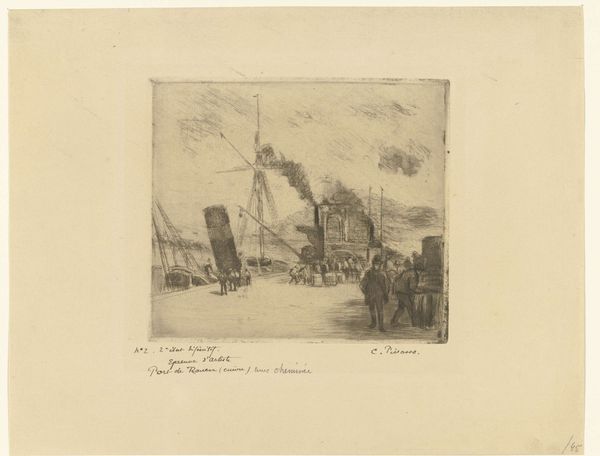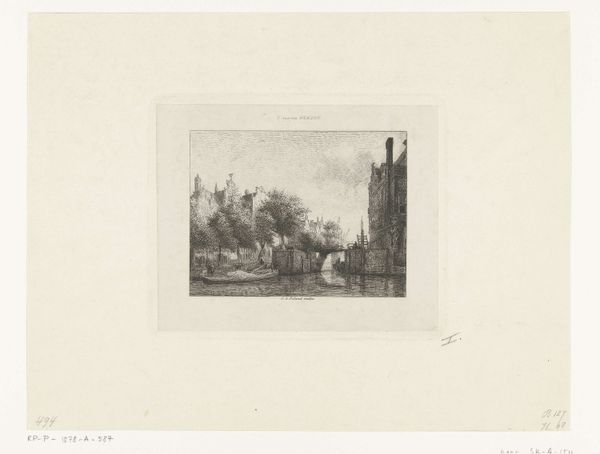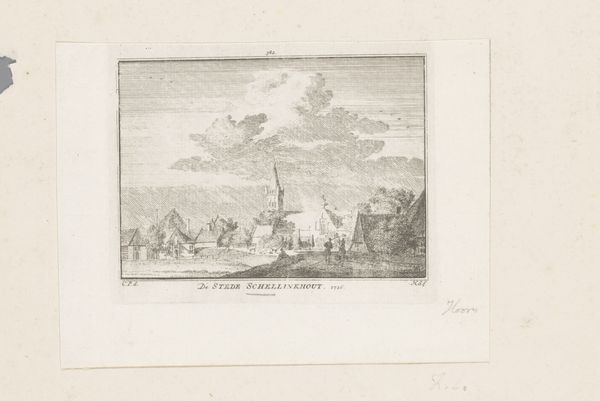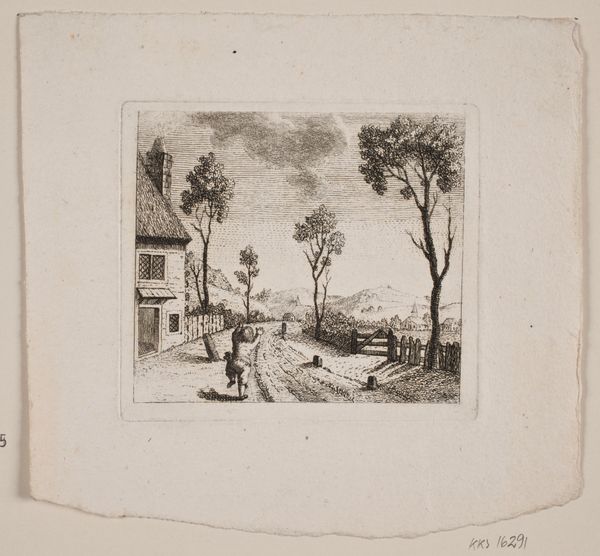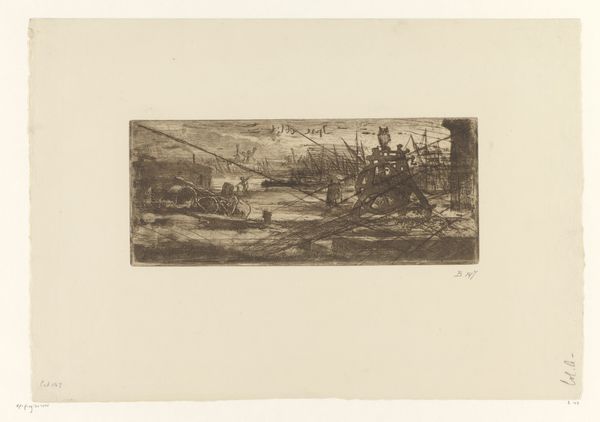
drawing, print, etching, plein-air
#
drawing
# print
#
impressionism
#
pen sketch
#
etching
#
plein-air
#
landscape
#
cityscape
Dimensions: sheet: 8 15/16 x 10 15/16 in. (22.7 x 27.8 cm) plate: 4 1/16 x 4 13/16 in. (10.3 x 12.3 cm)
Copyright: Public Domain
Editor: This is Camille Pissarro's "The Port of Rouen," an etching from 1885. It’s small, almost intimate, but evokes such a strong sense of place. The density of the lines gives the impression of a bustling, industrial port. What do you see in this piece, beyond the immediate impression? Curator: I see a visual statement about the burgeoning industrial revolution and its impact on urban spaces, specifically working-class environments. Rouen, as a port city, would have been a crucial node in global trade networks, reflecting themes of labor, commerce, and perhaps exploitation. The etching’s medium itself is telling—printmaking democratized art, making it more accessible to wider audiences and aligning with socialist ideologies prevalent during Pissarro’s time. Don’t you think the somewhat somber tonality might reflect some of the darker sides of industrial progress? Editor: I hadn’t considered the democratization aspect of printmaking, that's fascinating! It is hard to overlook the class elements too, though. In a way, by capturing the daily grind, he elevates it. Curator: Precisely! He immortalizes the working class within the canon of art. Furthermore, think about impressionism itself – with its emphasis on fleeting moments and everyday scenes – as a deliberate break from the academic art that largely served the elite. Do you see echoes of class struggles in this stylistic choice? Editor: That's a compelling point; focusing on the here and now, on the lives of ordinary people, becomes a kind of political act. It also reflects a turn away from romanticizing the past. Curator: Exactly. The "Port of Rouen" becomes more than just a pretty picture. It's a document, a social commentary, and an artistic statement rolled into one, prompting us to critically examine the socio-economic forces shaping our world, then and now. Editor: This has completely changed how I see the piece. I had not even noticed this interplay and now, its social and historical significance becomes clearer. Thanks for helping me uncover those connections.
Comments
No comments
Be the first to comment and join the conversation on the ultimate creative platform.
